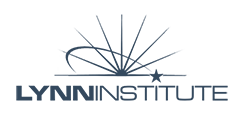Efficacy, Safety, and Pharmacokinetics (PK) of Triptorelin 6-month Formulation in Patients With Central Precocious Puberty
| Status: | Completed |
|---|---|
| Conditions: | Endocrine |
| Therapuetic Areas: | Endocrinology |
| Healthy: | No |
| Age Range: | 2 - 9 |
| Updated: | 7/29/2017 |
| Start Date: | April 2012 |
| End Date: | July 2014 |
An Open-label, Non-comparative, Multicenter Study on the Efficacy, Safety, and Pharmacokinetics of Triptorelin Pamoate (Embonate) 22.5 mg 6-month Formulation in Patients Suffering From Central (Gonadotropin-dependent) Precocious Puberty
The study will investigate the efficacy, safety and pharmacokinetics of triptorelin 22.5 mg
6-month formulation in 44 patients suffering from central precocious puberty. The total study
duration per patient will be 12 months (48 weeks).
6-month formulation in 44 patients suffering from central precocious puberty. The total study
duration per patient will be 12 months (48 weeks).
Inclusion criteria:
1. Onset of development of sex characteristics before 8 and 9 years in girls and boys,
respectively (breast development in girls or testicular enlargement in boys according
to the Tanner method), and candidate to receive at least 12 months of GnRH agonist
therapy after study entry.
2. Aged 2-8 years inclusive (i.e. < 9 years) for girls and 2-9 years inclusive (i.e. < 10
years) for boys at initiation of triptorelin treatment.
3. Initiation of triptorelin treatment at the latest 18 months after onset of the first
signs of precocious puberty.
4. Difference (Δ) bone age (Greulich and Pyle method) - chronological age ≥ 1 year.
5. Pubertal-type LH response 30 minutes following a GnRH agonist stimulation test before
treatment initiation (leuprolide acetate 20 μg/kg SC) ≥ 6 IU/L.
6. Clinical evidence of puberty, defined as Tanner Staging ≥ 2 for breast development for
girls and testicular volume ≥ 4 mL (cc) for boys.
7. Informed consent signed by one parent or both parents (as per local requirements), by
the liable parent or by the legal guardian (when applicable); assent signed by the
child if ≥ 7 years.
Non-inclusion criteria:
1. Gonadotropin-independent (peripheral) precocious puberty: extra pituitary secretion of
gonadotropins or gonadotropin-independent gonadal or adrenal sex steroid secretion.
2. Non-progressing isolated premature thelarche.
3. Presence of an unstable intracranial tumour or an intracranial tumour requiring
neurosurgery or cerebral irradiation. Patients with hamartomas not requiring surgery
are eligible.
4. Evidence of renal (creatinine > 2 x ULN) or hepatic impairment (bilirubin or ASAT > 3
x ULN).
5. Any other condition or chronic illness or treatment possibly interfering with growth
or other study endpoints (e.g. chronic steroid use [except mild topical steroids],
renal failure, diabetes, moderate to severe scoliosis, previously treated intracranial
tumour).
6. Prior or current therapy with a GnRH agonist, medroxyprogesterone acetate, growth
hormone or insulin-like growth factor-1 (IGF 1).
7. Major medical or psychiatric illness that could interfere with study visits.
8. Diagnosis of short stature, i.e. > 2.25 SD below the mean height for age.
9. Positive pregnancy test.
10. Known hypersensibility to any of the test materials or related compounds.
11. Use of anticoagulants (heparin and coumarin derivatives).
We found this trial at
12
sites
Lynn Health Science Institute Our mission is to provide clinical trials research and health services...
Click here to add this to my saved trials
Click here to add this to my saved trials
Click here to add this to my saved trials
Hackensack University Medical Center Hackensack University Medical Center, part of the Hackensack University Health Network,...
Click here to add this to my saved trials
Click here to add this to my saved trials
Click here to add this to my saved trials
Click here to add this to my saved trials
Click here to add this to my saved trials
Click here to add this to my saved trials
Click here to add this to my saved trials
Click here to add this to my saved trials

